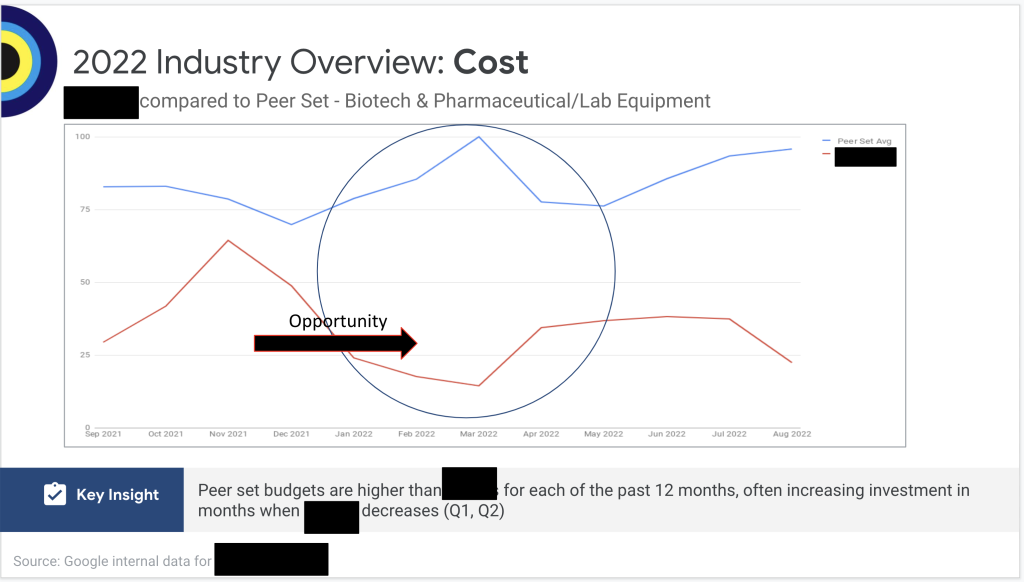With the holiday season upon us, it’s time to compile my annual wishlist of things I’d like to see in Google Ads and the digital marketing industry in the coming year.
For this year’s wishlist, I have wishes for:
- Our industry
- Women in our industry
- B2B advertisers

1. My wish for the digital marketing industry: More constructive conversations
Social media platforms, especially LinkedIn, are a great place for digital marketing professionals to congregate and share their knowledge and experiences.
If you have a question you want to ask other experts or have an interesting observation you want to share, you can do so immediately—without waiting for an industry conference or meeting up with colleagues over coffee.
Over the years, I’ve benefited greatly from these conversations, and I hope I’ve made some useful contributions as well.
However, because these conversations happen on social media, they can sometimes fall prey to the negativity that can infect all social media platforms. I’m not sure why this happens… maybe a full-throated rant is easier to write (or will get more likes) than a considered discussion about what can be done to address the issue that sparked the rant.
I’m not objecting to anyone’s need to blow off steam. Without question, our industry comes with its challenges and frustrations just like any other.
But perhaps LinkedIn isn’t the best place to rant about our frustrations. Or if we do, maybe we could also provide some constructive ideas to go along with our rant.
For myself, I’ve been making a concerted effort to follow people in our industry who have thoughtful, constructive things to say—and unfollow folks who only add to the negativity.
2. My wish for women in our industry: More mentorship
From the moment I started my career in digital marketing, I noticed the lack of women in senior leadership positions. When I founded my own agency years later, that gap was still evident.
And even today, I can’t say that things have changed a whole lot.
Why is that?
In her TED talk, Laurie McGraw argues that women need more confidence, they need to ask for what they want, and they need mentorship.
Some of my female contacts decided to take the plunge and start their own businesses this year. I’m super excited for them and am doing whatever I can to support them, from lending an ear to offering advice.
These exchanges have been very rewarding for me and helpful for my colleagues. Therefore, I’ve decided to start offering this mentorship more formally.
One of my goals in 2024 is to set office hours every week where women who are ready to work for themselves or start their own agencies can book a call with me to brainstorm ideas and get my advice. By offering my time in this way, I hope I can play some small part in closing the gender gap that exists in senior leadership positions in our industry. Stay tuned for more on this!
3. My wish for B2B advertisers: Greater budget agility
There’s nothing more frustrating than seeing a rich campaign opportunity—and having your hands tied by fixed budget constraints.
That’s why my wish for B2B advertisers is greater budget agility.
Ginny Marvin covered this important topic recently in Search Engine Journal. She explains:
“When you’re budget agile, you can respond much faster to market and business dynamics versus being constrained by fixed budgeting that’s based on a strict timeline, specific channel silos, and other constraints.”
Ginny writes that a recent Google study revealed that 48% of budget agile marketers state that their marketing performance exceeded internal expectations and marketing KPIs, compared to 33% of marketers who are not budget agile.
I’m not suggesting that you throw out your planning process. Rather, you should continue to plan but give yourself space to adapt and shift as conditions change—which means increasing the frequency with which you revisit your plans.
I wish this agility for B2B advertisers because I’ve seen how having the ability to find extra budget to leverage opportunities when they arise can be a real game changer.
I’ve also seen how delays in getting budget approval—and consequently putting campaigns on pause—can negatively impact performance.
In this example (below), our client struggled to get their budget approved and in place for Q1 of 2023. This created an opportunity for their competitors (the blue line peaks), and a lost opportunity for them (the red line dives).

There’s another problem that can arise from this scenario as well: you might face higher costs per click when you turn your campaigns back on.
Of course, I don’t expect B2Bs to free up more budget for campaigns overnight. But if you’re having a great Q1, wouldn’t it be smart to keep that going in Q2?
Honestly, I don’t think greater budget agility is a huge mountain to climb. In my experience, when the right people are on board (e.g. the CEO, CFO, or CMO), the budget to support well-performing campaigns is always magically found.
4. My wish for Google: More love for B2Bs
The last wish for 2024 is for Google to give more love to B2B advertisers.
My impression is that B2C advertisers are Google’s biggest money-maker, so they get most of the attention.
Even so, I’d love to see a renewed B2B focus at Google. Maybe a new commission that delves into what’s working, what’s not, and how Google could improve things for B2B advertisers.
A great place to start would be finding a way to shorten the lengthy “learning periods” our B2B clients experience.
Any time we launch a new campaign for these clients, Google Ads needs time to “learn” and adjust to that change. When the bid strategy status is “learning,” all we can do is sit and wait until the learning is done.
This learning status can last days—and sometimes a week or more—for new B2B campaigns.
This delay puts us and other B2B marketing agencies in a real pickle. How do we tell a new client that “nothing has changed” in their account after they’ve been working with us for a week or more? It’s not a comfortable conversation.
Happy holidays!
Whether my wishes are granted or not, my team and I wish you all a very happy holiday season!






